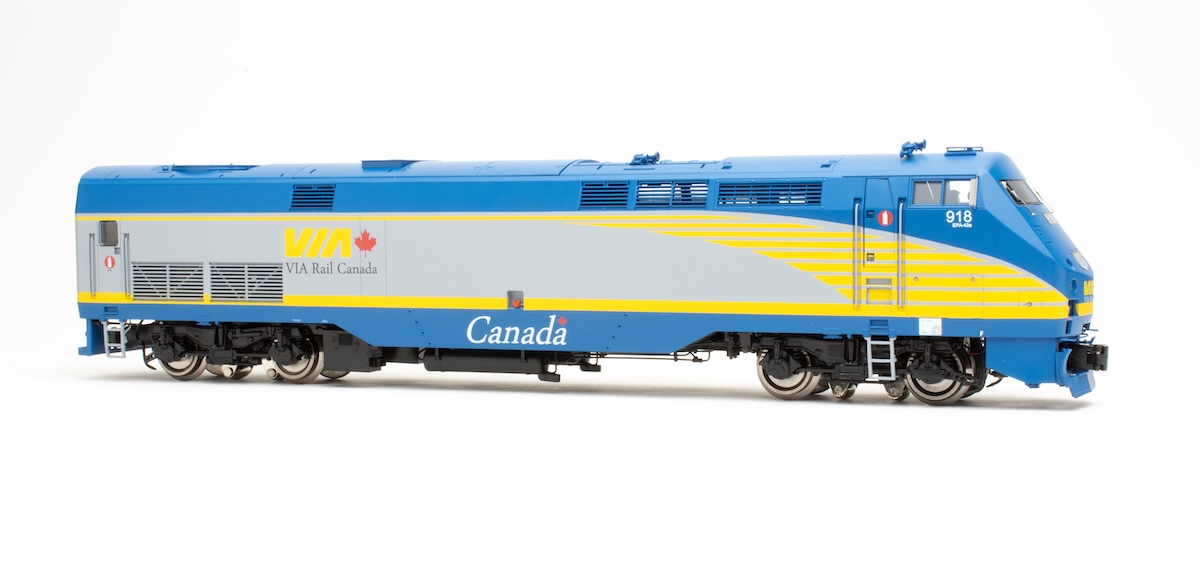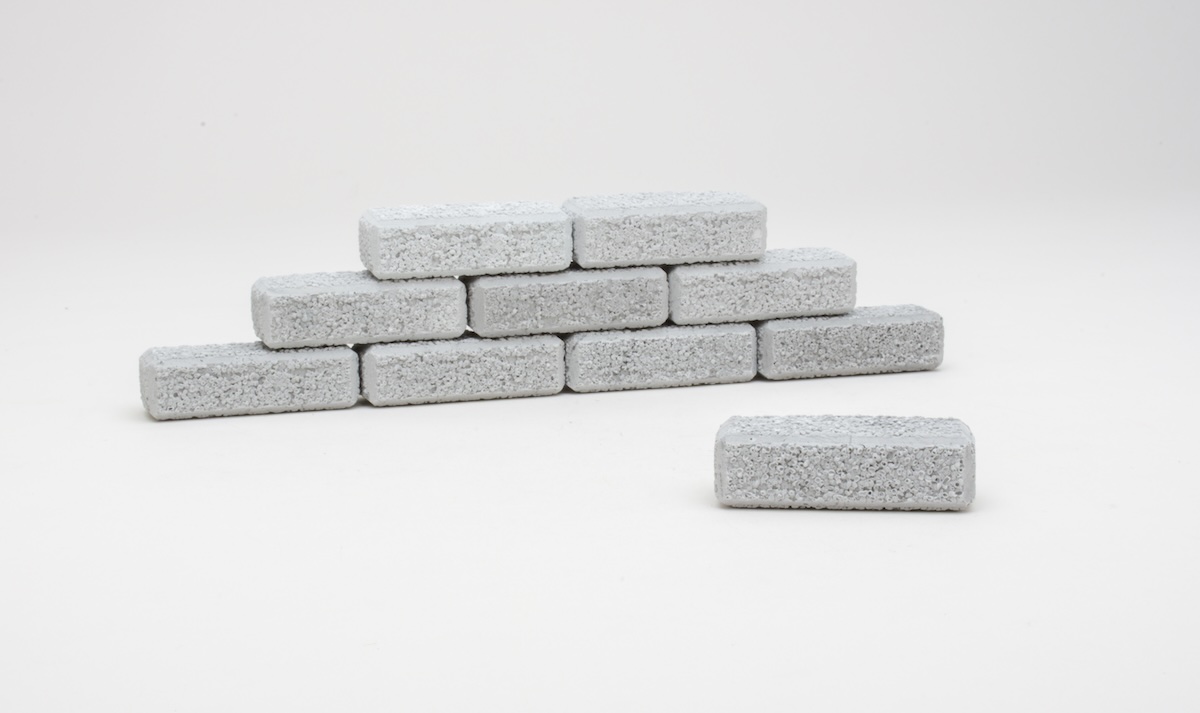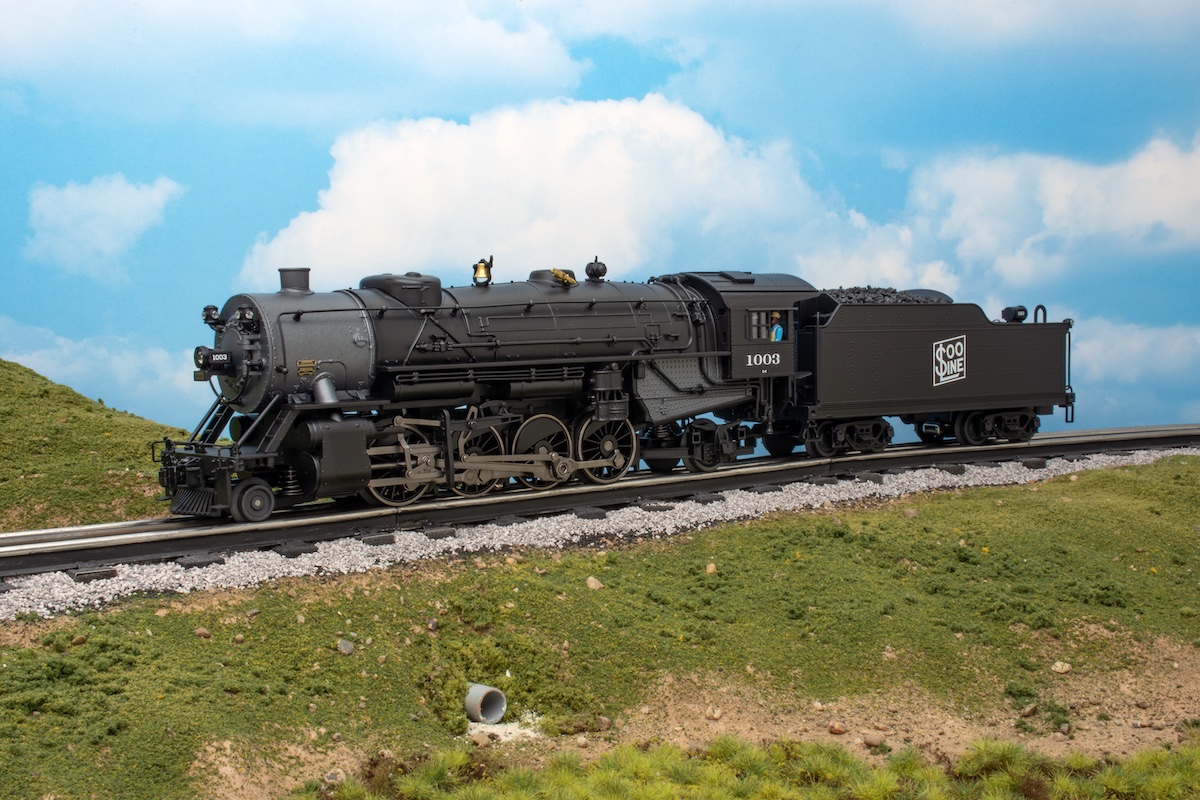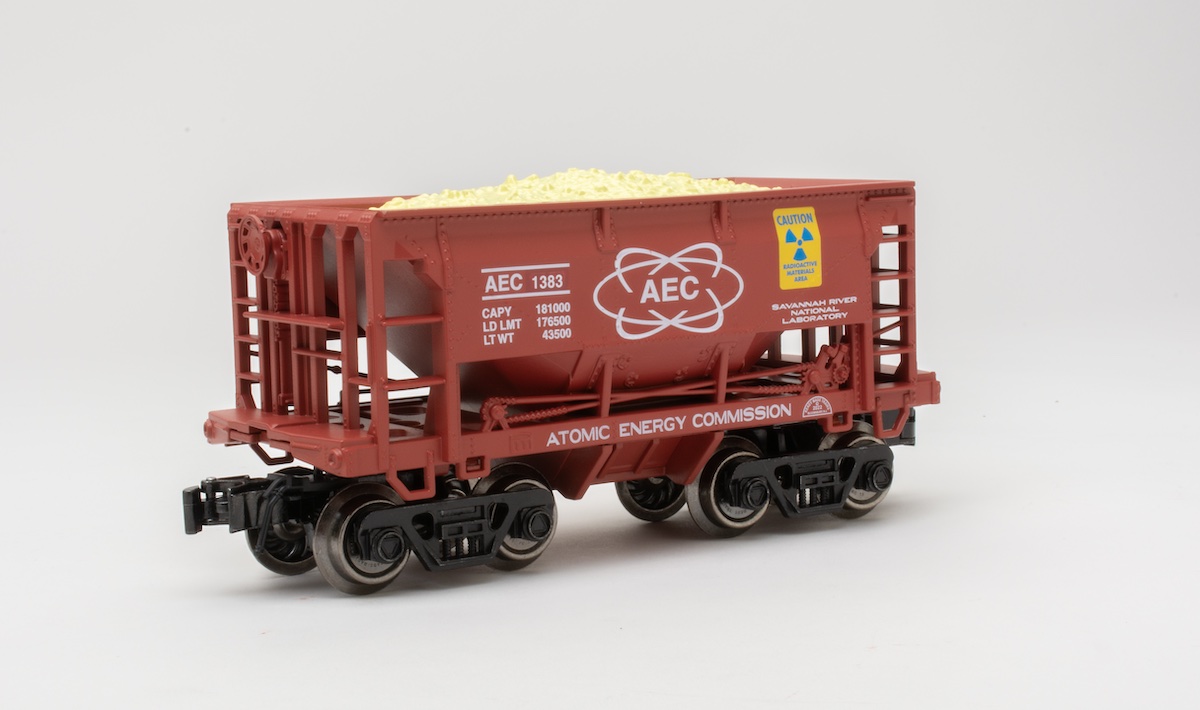But after examining and testing K-Line’s scale-sized Hudson, I think the other O gauge manufacturers should consider calling it quits on any more 4-6-4s. K-Line has delivered an exceptional mix of detail, performance, and price. It may be impossible for anyone else to top it.
The model
The New York Central rostered nearly 400 4-6-4 Hudsons. K-Line has modeled the line’s J-1e-class locomotives, nos. 5315-5344. This model is the ninth New York Central Hudson I’ve reviewed for CTT, and it fills in every box on my checklist for appearance, operation, and, best of all, value.
This model is milestone locomotive for K-Line, a company that has been shaking up its product line and expanding its market share for a few years now. The Hudson shows how far K-Line has come from its trains of the 1980s and ’90s, many of which were produced using old Kusan and Marx molds. The Hudson is proof that K-Line can go toe to toe with the best of them.
I bought a fancy new digital caliper to measure the accuracy of the models I review for CTT and put it to the test on the Hudson. From the tip of the pilot to the end of the tender, the model’s frame measures 96 scale feet (24 inches) versus the prototype’s 95 feet, 11 inches. (The model’s oversized knuckle coupler adds about 2 scale feet.)
A measurement from the bottom of the locomotive to the top of the stack was 3.78 inches, a scale 15 feet, 1.5 inches compared to the prototype’s 15-feet, 1-inch height.
The outside rims of the drive wheels, at 6 feet, 6 inches in O scale (1.628 inches), are a scale half-inch shorter than the prototype’s 79-inch drivers.
Dimensionally, the K-Line Hudson more than passes my tests for toy train scale accuracy.
Appearance is next. Does K-Line’s scale Hudson compete with top-level scale locomotives from Lionel and MTH? From pilot to coil coupler, the tooling of K-Line’s model is fantastic. The level of detail sets it in a class once occupied only by locomotives costing $1,000 or more.
The nose of the locomotive is superb, and the wind deflectors and the compressors concealed behind them could not look better. The pilot features a dummy drop coupler that you can raise or lower and a nice simulated uncoupler arm that’s joined to the coupler by a chain. For double heading, K-Line provides an O gauge dummy coupler with a mid-shaft joint.
The headlight and illuminated numbers on each side look great. You’ll find illuminated marker lights at the top of the smokebox and on the tender.
Prototype photos indicate that the running boards of the Hudson were smooth, so I was glad to see K-Line resisted slapping metal or wood texture onto every section of flat surface!
The boiler has a surprising number of add-on pipes and other components. Black-painted handrails run the length of the boiler, and, if there was a mold seam at the top of the boiler shell, it has been well concealed. You’ll also find trust and builder’s plates on the boiler.
I really liked the locomotive’s steam chests. They show just a touch of rivet and access-hatch detail and have an add-on steam line that you can trace to the bottom of the boiler. I don’t recall seeing this feature on many other locomotives.
The running gear is fully rigged; the shiny metal of the rods has been toned down, though the rims of the spoked drivers look polished. The rear set of drivers is equipped with traction tires.
The tiered trailing truck features an axle with solid wheels and a second axle with larger-diameter spoked wheels.
The cab has opening roof hatches, single bulb illumination, a fully featured backhead with firebox glow, and two crew figures. They both look a little zombie-like, just sitting there, staring forward. An arm reaching for the whistle cord or the throttle would add a touch more realism.
Overall, the painting and decoration are about as striking as it gets, with satin black paint and crisp white lettering. I did, however, see several spots on our sample where the paint may have been sprayed on a bit too thick. Some of the rivets in these areas weren’t as clearly defined as elsewhere on the locomotive.
The tender is a die-cast metal, six-axle job with a cast-in coal load. Right off the bat it passed my quirky “opening water hatch” test for premium O gauge steamers. Beneath the hatch cover you’ll find the RailSounds/SignalSounds switch and volume control knob, so you won’t need to flip over the tender or remove its coal load to make adjustments.
Not all New York Central Hudsons used tenders with water scoops, but this one features a well-crafted scoop and simulated gear to lower the scoop to the track pan.
The rear of the tender has a simulated uncoupler arm, grab irons, a ladder, rails along the sides of the deck, and backup and marker lights. It also has what might be the longest locomotive-to-tender electrical tether I’ve encountered – more than 5 inches long! The excess length can be pushed into the shell of the tender. A second drawbar lets you shorten the distance between the locomotive and tender if you have broader curves on your layout that need less cab-to-tender clearance.
On the test track
The locomotive performed flawlessly in conventional-control mode. I strapped the Hudson to our 25-car mixed make and vintage freight train and let ‘er rip. The locomotive never balked; it just dug into the track and started hauling!
My conventional-control mode low-speed average was 19.5 scale mph, and the high-speed average was 84.8 scale mph. In command-control mode, I got the Hudson down to 9.8 scale mph, and that’s without any sort of speed control assistance as found on Lionel and MTH locomotives.
Drawbar pull for the 10-pound, 2-ounce steam locomotive was a healthy 2 pounds, 6 ounces.
With our freight train in tow and running at 18 volts in conventional-control mode, the Hudson was timed at 73.6 scale mph.
The smoke unit is not fan-assisted, so while it puffed respectably, the effect was not awe inspiring.
Keeping in mind that Lionel reserves the best sound packages for its own use, the K-Line Hudson’s RailSounds system delivers a fine array of steam effects.
While the locomotive was blazing along the right-of-way, I hit the direction button and noticed something that impressed me.
The flywheel and gearing enabled it to glide to a halt before changing direction. Now before you say, “Bob, that’s what a flywheel is supposed to do,” many of the locomotives I’ve tested stop as gracefully as a 16-year-old in a driver’s ed. car.
Popping the hood reveals that this is not your father’s Hudson. The can-style motor is mounted above the first and second set of drivers, facing rearward. Tradition has dictated that the motor ride at an angle above the rear truck with a shaft-and-worm-gear assembly taking power to the wheels. That’s why so many older steamers have an empty cab and a motor head sticking out. Kudos to K-Line for thinking out of the box.
Unfortunately, near the end of the testing process, a gremlin showed up. I took a staff member to the CTT workshop to show him the locomotive. There was a derailment in command-control mode (my fault), and 18 volts zapped one of the circuit boards in the tender. Afterward we still had a working sound system, but no forward or backward movement, so we sent the locomotive to be repaired.
Is this the last Hudson that needs to be made in O gauge? Probably not. But if the U.S. Department of Toy Trains dictated no more Hudson models, K-Line’s rendition – with its combination of detail, price, and performance – would be the high-water mark.
















I have one of these and it is truely a fine asset to any modelers high iron. I will surely buy another when I find one for sale.
trainman375@aol.com
I really enjoyed this article on the K-Line J1e Hudson by Bob Keller, although in the third paragraph ie. "the model" you have the engine numbers as 5315-5344, and they are in fact 5343-5344. I have both of these engines and the….J1e Hudson by K-Line is truely magnificent ! Now I need the CTT issue in which this fine revue appeared. Thankyou Bob, Bill Girardin
My cousin has this train, it is great lionel made out taking Kline over. It is a shame that it has happened, I have a Kline Pennsy K4 great steamer, looks great weathered. Ray